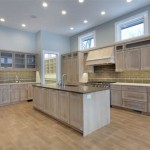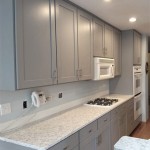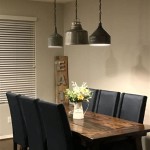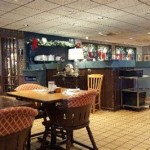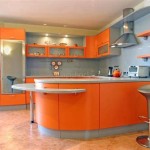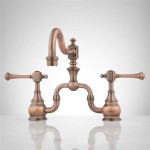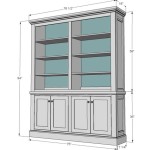Modern European Style Kitchen Cabinets: A Synthesis of Form and Function
Modern European style kitchen cabinets represent a distinct departure from traditional American cabinet design, prioritizing sleek lines, minimalist aesthetics, and maximizing functionality. This style, influenced by European design principles, emphasizes clean surfaces, concealed hardware, and innovative storage solutions. The result is a kitchen that feels open, airy, and highly efficient, designed to serve both the practical needs of food preparation and the aesthetic desire for a contemporary living space.
The defining characteristics of modern European cabinets are rooted in a design philosophy that values simplicity and efficiency. This means fewer embellishments, a focus on horizontal lines, and a dedication to creating a seamless, integrated appearance. Materials often lean towards engineered wood, laminate, and metal, chosen for their durability, aesthetic appeal, and ease of maintenance. The overall effect is a kitchen space that feels both cutting-edge and timeless.
One of the most striking visual aspects of modern European kitchens is the prevalence of slab doors, characterized by their flat, unadorned surfaces. These doors eliminate the raised panels, detailed moldings, and ornate hardware common in more traditional styles. Instead, the focus remains on the material itself, allowing the inherent beauty of the wood grain or the smooth finish of the laminate to take center stage. The sleekness of the slab door is often enhanced by the use of integrated handles or push-to-open mechanisms, further minimizing visual clutter and contributing to the overall minimalist aesthetic.
Beyond the visual elements, the functional aspects of modern European cabinets are equally important. These cabinets are designed to maximize storage space and improve kitchen workflow. Features such as pull-out shelves, deep drawers, and integrated organizers are common. These elements contribute to a kitchen that is not only beautiful but also highly functional and user-friendly.
Key Point 1: Defining Design Elements of Modern European Cabinets
Several key design elements distinguish modern European cabinets from other styles. Understanding these elements is crucial for identifying and appreciating the unique characteristics of this design approach.
Slab Doors: As previously mentioned, the flat, unadorned surface of slab doors is a hallmark of modern European cabinets. This design choice eliminates visual distractions and allows the material to take center stage. Slab doors are typically constructed from engineered wood or laminate, providing a smooth, uniform surface that is easy to clean and maintain.
Frameless Construction: Unlike traditional framed cabinets, modern European cabinets are typically frameless, also known as full-access cabinets. This means that the doors and drawers attach directly to the sides of the cabinet box, eliminating the face frame that is common in American-style cabinets. This frameless construction provides greater access to the interior of the cabinet, maximizing storage space and making it easier to organize items.
Horizontal Orientation: Modern European kitchens often emphasize horizontal lines, creating a sense of spaciousness and flow. This can be achieved through the use of long, horizontal cabinets, integrated appliances, and minimalist hardware. The horizontal orientation also contributes to the overall clean and uncluttered aesthetic of the kitchen.
Integrated Hardware: To maintain the sleek and minimalist look, modern European cabinets often feature integrated hardware. This can include recessed handles, push-to-open mechanisms, and soft-close hinges and drawer slides. Integrated hardware helps to minimize visual clutter and create a seamless, streamlined appearance.
Minimalist Detailing: Modern European cabinets avoid ornate detailing and embellishments, focusing instead on clean lines and simple forms. This minimalist approach allows the beauty of the materials and the functionality of the design to take center stage.
Key Point 2: Material Choices and Finishes
The selection of materials and finishes plays a crucial role in achieving the desired aesthetic of modern European kitchen cabinets. The choices often reflect a commitment to durability, sustainability, and contemporary design.
Engineered Wood: Engineered wood, such as particleboard or MDF (medium-density fiberboard), is a common material choice for modern European cabinets. These materials are strong, stable, and resistant to warping and cracking. They also provide a smooth, uniform surface for applying finishes.
Laminate: Laminate is a popular finish choice for modern European cabinets due to its durability, affordability, and wide range of colors and textures. Laminate is a thin layer of decorative paper that is bonded to a substrate, such as engineered wood. It is available in a variety of finishes, including solid colors, wood grains, and textured surfaces.
Wood Veneer: Wood veneer is a thin layer of real wood that is applied to a substrate, such as engineered wood. Wood veneer provides the look and feel of solid wood at a lower cost. It is available in a variety of wood species and finishes, allowing for a wide range of design options.
Metal: Metal accents are often incorporated into modern European kitchen cabinets, adding a touch of sophistication and durability. Stainless steel, aluminum, and brushed metal finishes are common choices for hardware, trim, and other decorative elements.
Glass: Glass is another popular material choice for modern European cabinets, particularly for upper cabinets. Glass doors can create a sense of openness and lightness in the kitchen, while also providing a display space for dishes, glassware, and other decorative items. Frosted glass, textured glass, and tinted glass are all common options.
Finishes: Common finishes for modern European cabinets include matte, gloss, and textured options. Matte finishes provide a soft, understated look, while gloss finishes add a touch of glamour and reflect light. Textured finishes can add visual interest and depth to the cabinets.
Key Point 3: Functional Considerations and Storage Solutions
Beyond aesthetics, modern European kitchen cabinets excel in functionality, incorporating innovative storage solutions to maximize space and improve kitchen workflow. These features contribute to a kitchen that is not only beautiful but also highly practical and user-friendly.
Pull-Out Shelves: Pull-out shelves are a common feature in modern European cabinets, providing easy access to items stored in the back of the cabinet. These shelves can be easily pulled out, allowing you to see and reach everything inside without having to bend down or reach blindly.
Deep Drawers: Deep drawers are another essential element of modern European kitchen design. These drawers provide ample space for storing pots, pans, and other large items. They can also be equipped with dividers and organizers to keep items neatly arranged.
Integrated Organizers: Modern European cabinets often include integrated organizers for storing utensils, spices, and other small items. These organizers help to keep the kitchen clutter-free and improve efficiency.
Corner Cabinets: Corner cabinets can be difficult to access in traditional kitchens, but modern European designs offer innovative solutions such as lazy Susans, pull-out shelves, and rotating carousels to maximize space and accessibility in corner areas.
Vertical Storage: Utilizing vertical space is crucial in modern European kitchen design. Tall pantry cabinets and vertical dividers can help to maximize storage capacity and keep items organized.
Touch-to-Open Mechanisms: These mechanisms allow cabinet doors and drawers to be opened with a simple touch, eliminating the need for handles and creating a seamless, minimalist look. This feature is particularly useful for cabinets located in high-traffic areas.
Soft-Close Hinges and Drawer Slides: Soft-close hinges and drawer slides prevent cabinet doors and drawers from slamming shut, reducing noise and preventing damage. These features also contribute to a feeling of quality and sophistication.
In conclusion, modern European style kitchen cabinets offer a compelling blend of form and function, characterized by clean lines, minimalist aesthetics, and innovative storage solutions. The design philosophy prioritizes simplicity, efficiency, and maximizing space, resulting in a kitchen that is both beautiful and highly practical. The careful selection of materials, finishes, and hardware further enhances the modern aesthetic, creating a space that is both contemporary and timeless. By understanding the key design elements and functional considerations of modern European cabinets, homeowners and designers can create kitchens that are not only visually appealing but also highly efficient and user-friendly.

European Style Kitchen Cabinets Oppolia

Grey Wood European Kitchen Cabinets Frameless Style Euro Cabinetry Flat Slab Sweden

9 Tips To Create European Kitchen Cabinets Oppein

Modern European Kitchen Cabinets Of The Desert

A Guide To European Kitchen Styles

Popular Materials For European Kitchen Cabinets

The Best Modern European Style Kitchen Cabinets With Authentic Custom Cabinetry

European Style Cabinets Direct Usa

Mastering European Style Modern High Gloss Kitchen Cabinets The Consulting Co

European Style Kitchen Cabinets Remodern Living
Related Posts

